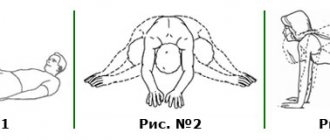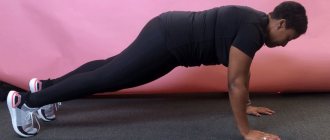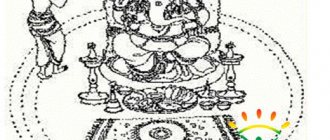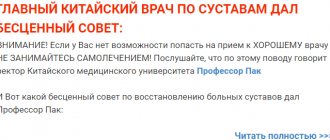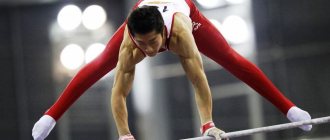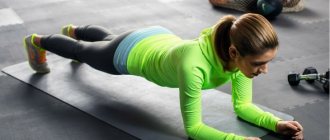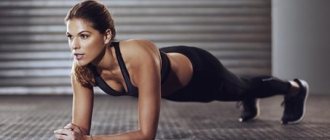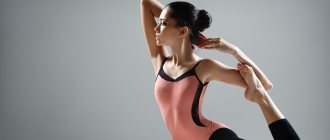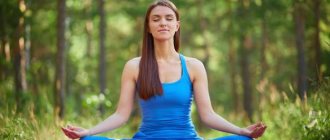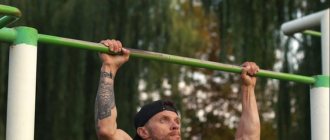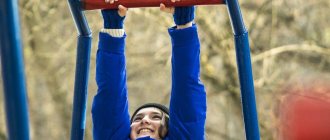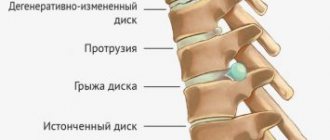What is contraindicated for scoliosis?
Even normally, the human spine is not perfectly straight. It is even in newborns and infants. As soon as a little man begins to sit and then walk, his spine begins to bend in one direction or another. Curves appear for a reason; they have their own physiological meaning. Thanks to the existing bends, the spinal column experiences less static and dynamic load during upright walking, lifting weights, prolonged standing, etc.
Some sports, which under other circumstances would benefit the body, can cause harm in scoliosis and cause even greater curvature. Here are some of them:
- Team games, such as hockey, football, volleyball, basketball, etc. There is a high likelihood of injury in them, which can contribute to even greater curvature. In addition, you have to run, stand and jump for a long time, and this type of load is contraindicated.
- A ride on the bicycle. Doctors sometimes approve of cycling, but more often they oppose it. The need to reach for the steering wheel makes the back round, leading to stooping and deformation of the spine. A high handlebar may partially solve the problem.
- Sports in which force is applied to a specific part of the body, further exacerbating the curvature. For example, bowling, fencing, tennis, boxing. You will also have to give up badminton and golf due to sudden twisting of the body.
- Weightlifting. Lifting heavy objects is strictly prohibited due to the stress on the spinal column. For the same reason, bodybuilding should be exercised with caution.
- Sports and rhythmic gymnastics. Sometimes it is advised to do gymnastics to improve stretching and strengthen the back, but this is not the best solution. The loads that are necessary to achieve results in these disciplines are unlikely to be useful in the treatment of scoliosis.
- Some types of dances. It is contraindicated to engage in dances that involve complex gymnastic elements (break dancing, pole dancing) and twisting elements (oriental dancing).
- Run. If running is acceptable at the first stage, then in the future it is strictly contraindicated. Each time your foot lands, a strong shock wave is generated, which only worsens the curvature of the spine.
Exercises such as squats, leg lunges, body crunches, deadlifts, and somersaults are prohibited. Exercises performed on one leg have a negative impact, even if it’s just standing. It is important not to forget that any type of physical activity should begin with a warm-up consisting of permitted exercises.
Even normally, the human spine is not perfectly straight. It is even in newborns and infants. As soon as a little man begins to sit and then walk, his spine begins to bend in one direction or another.
Curves appear for a reason; they have their own physiological meaning. Thanks to the existing bends, the spinal column experiences less static and dynamic load during upright walking, lifting weights, prolonged standing, etc.
What is scoliosis?
There are the following types of bends and deformations of the spine - anteriorly (lordosis), posteriorly (kyphosis), in one direction or another (scoliosis). A person has 4 physiological curves - 2 lordosis (cervical and lumbar) and two kyphosis (thoracic and sacral). There is no scoliosis among the physiological curves.
Thus, any, even barely noticeable, curvature of the spine to the right or left is certainly a pathology. Most often, scoliosis develops as a result of systematic violations of posture in childhood and adolescence. But this is far from the only cause of spinal curvature.
Scoliosis can develop after a spinal injury. Sometimes the spine is bent due to various endocrine diseases and vitamin deficiencies with impaired absorption of calcium supplied with food. And in some cases, scoliosis develops in childhood for an unknown reason.
Scoliosis degrees
Depending on the angle of curvature of the spine, there are 4 degrees of scoliosis:
- 1st degree – curvature angle from 1 to 10 degrees
- 2nd degree – from 11 to 25 degrees
- 3 degree – from 26 to 50 degrees
- 4th degree – over 50 degrees
General restrictions
With scoliosis, not only the spinal column suffers, but also the internal organs due to the asymmetry of the chest. In addition, when the spine is curvature, intervertebral discs and nerves are compressed, which leads to osteochondrosis and disc hernias. Contraindications for scoliosis are due to excessive muscle tension on one side and relaxation on the other. In this regard, with scoliosis it is not advisable to:
- Standing or sitting for a long time in any one fixed uncomfortable position
- Run fast
- Carry heavy weights in one hand
- Make sharp circular movements
- Wear tight clothes.
Drug treatment can only to a small extent affect the pathological process. The entire emphasis is on therapeutic exercises. The exercises are designed to, if not completely, then at least partially restore the normal configuration of the spine. In addition, the muscle corset is strengthened, blood flow through the vessels is improved, and the functioning of internal organs is normalized.
But therapeutic exercises can bring not only benefits, but also harm. The following are contraindicated exercises for scoliosis:
- Running is a relative contraindication. You can run only with a slight to moderate curvature of the spine. Running is prohibited with scoliosis of 3-4 degrees, as well as with a rapidly progressing process.
- All exercises performed on one leg, be it standing, lunges forward and to the side with or without dumbbells. These exercises negatively affect the configuration of the pelvis, which is already curved due to scoliosis.
- For the same reason, it is forbidden to sit in the lotus position. This pose involves twisting the legs at the knee joints.
- Somersaults are too dangerous in terms of injury even for a normal spine. Therefore, in case of scoliosis, they are strictly contraindicated.
- Dancing and gymnastics create a high, uneven load on the spine. Therefore, if it is bent, it is contraindicated.
- All exercises that involve a vertical axial load on the spine and circular movements with turns are prohibited.
- Outdoor sports games (football, badminton, volleyball) are also contraindicated. Some of them are associated with fast running, while others are associated with rapid turns of the body.
A natural question arises: what is allowed then? You can get the answer to this question from a physical therapy specialist. After all, all health-improving gymnastics for scoliosis are carried out on his recommendation and under his personal supervision.
Features of the pathology
With scoliosis, there is a deviation of the spinal column to the right or left side, followed by torsion of the vertebrae. That is, the spine not only bends, but also twists around its axis. This leads to a variety of complications: weakening of muscles, displacement of vertebrae, compression of nerve fibers and blood vessels, and deterioration of the functioning of internal organs. Any external influence can provoke injury, which will further complicate the patient’s situation.
Due to deformation, the spine becomes very vulnerable to external influences
The stronger the deformation, the more vulnerable the spine is. In total, there are four degrees of scoliosis, depending on the angle of curvature (according to Cobb):
- first – up to 10°;
- the second – from 11° to 25°;
- third – from 26° to 50°;
- fourth - over 50°.
Prices for orthopedic corsets and posture correctors
Contraindications for scoliosis
A common postural disorder is scoliosis, a disease that begins to worsen a person’s life from school age. It develops slowly, but if left untreated, it greatly affects the condition and functionality of many internal organs. Like any illness, it has a lot of strict and not very strict prohibitions in terms of physical activity. What exercises are contraindicated for scoliosis is an important question that requires clarification.
There are natural curves of the ridge, but if a person begins to develop this disease, this means that, in addition to the necessary physiological ones, curvatures appear to the left or to the right. Over time, the thoracic or lumbar spine becomes deformed, or a combined type of disease occurs, affecting several sections simultaneously.
The question of what can be done with scoliosis, and what types of activities are prohibited, is extremely important, since the right choice of exercises and physical activity can relieve the disease, or, conversely, aggravate it. Most often, problems with the spine are found in young patients when the spine It has not yet stiffened, and irregular bends can still be corrected.
Exercises contraindicated for scoliosis
We are accustomed to the idea that a disease must be treated with medication. However, curvature of the spine is an exception. The main factor here that helps correct posture is physical therapy. They help strengthen muscles and, in some cases, partially restore the physiological state of the back.
But the doctor recommends specific sets of elements based on the patient’s health status and how actively the disease is progressing. The medical community has developed a significant list of contraindications for scoliosis. These include the following:
- running is allowed in the initial stages of the disease;
- flexibility exercises are prohibited;
- sudden movements and somersaults are traumatic for a healthy spine, and even taboo for those with curvatures;
- active sports that overload the spine are excluded (boxing, hockey, parkour, wrestling, football, many others);
- uncontrolled stretching and exercise on horizontal bars are prohibited;
- if the vertebrae are prone to rotation, that is, they rotate slightly around their axis, then you should turn slowly, with extreme caution;
- uncontrolled trips to the “rocking chair” and “gym” are fraught with deterioration in the condition of the ridge.
From this list it is clear that the answer to the question “is it possible to do somersaults with scoliosis?” will be negative. A popular gymnastic element that children and teenagers with a healthy back can easily perform is the bridge; it is also better not to do it if you have scoliosis. This also includes the girls’ favorite “birch tree”.
Certain daily activities also have a detrimental effect on the spine. It is worth highlighting the two most important points that people with scoliosis should avoid:
- Long fixed body position. The position should be changed at least once every 20 minutes (it doesn’t matter whether you are sitting or standing), especially if the body experiences discomfort.
- Carrying a bag, package, case in one hand. Preference should be given to a backpack (put it on your shoulders) or evenly distribute the load into two bags to carry them in both hands.
It will also be useful to familiarize yourself with the basic rules for preventing scoliosis, which can be found here at the end of the article. This will in most cases avoid further progression of the disease!
With any disease, there are a number of points that can complicate the course of the disease and which are extremely undesirable to do.
With scoliosis, the spine is the first to suffer, so the following things must be excluded:
- be in a static, uncomfortable position for a long time;
- run at high speed;
- carry a bag in one hand;
- make sharp circular movements;
- wear tight, ill-fitting clothing.
A patient with scoliosis must constantly control his movements and correctly distribute pressure on the spine.
Such restrictions should be applied starting from the second stage of the disease, when the angle of curvature is more than 10°.
Effective exercise equipment for the treatment of scoliosis
There are 2 types of exercise equipment used to treat scoliosis:
- Power;
- Cardio equipment (treadmills, exercise bikes).
To treat back curvatures, the following types of strength training equipment are used:
- “Twist” refers to models for the formation of hyperextension. Consists of a special bench and several supports. It allows you to perform forward movements with your torso, which allows you to stretch your spine vertically. The product is mainly used to eliminate deformities in the middle part of the back.
- The “T-rod” is a lever that is attached to a hinge on one side, and “pancakes” are located on the other. Allows you to perform exercises in a standing and sitting position.
Models with adjustable loads have a footrest and a lever connected to the loads by a separate stand. When training on it, resistance is created to the muscle groups of the limbs and torso.
On power models you can perform:
- Pulls to the chest and behind the head with curvature of the thoracic spine;
- Pulls from a horizontal block;
- Trapeze with barbell and dumbbells;
- Hyperextension.
Attention! When performing strength training, there is a risk of injury to the osteoarticular system of the back, so the gymnastics complex prescribed by a rehabilitation doctor must be followed with the greatest precision.
Pull-downs are aimed at training the rhomboid, supraspinatus and infraspinatus muscles, which fix the neck and thoracic spine.
Hyperextension trains the extensor muscles that are directly adjacent to the spinal column.
When the strength of these muscle groups is sufficient (assessed by the instructor), other exercises can be added to treat scoliosis:
- Deadlift;
- Bent-overs with a barbell;
- Bent over row;
- Swing dumbbells to the side.
This complex quite effectively eliminates lateral curvature in the lumbar spine, but at the same time it is dangerous to health. Girls with stage 2 scoliosis should not lift a barbell weighing more than 10 kg, and men should not lift more than 20 kg.
Before starting a workout, you need to make sure that the person will conduct it correctly. For this purpose, several preparatory classes are held in specialized rehabilitation centers together with an instructor.
If your doctor has prescribed you to wear an orthopedic belt or corset, it should not be removed when performing strength exercises.
Cardio equipment is used to restore respiratory and cardiac activity, which changes with pathological lateral displacement of the spine. Prolonged abnormal breathing leads to retraction of the intercostal spaces, deformation of the chest and increased respiratory failure.
Scoliosis degrees
What exercises should you choose for scoliosis?
There are many different techniques and exercises for the prevention and treatment of scoliosis. But we cannot recommend them to everyone. Everything here must be individual. Different degrees of curvature – different exercises?
If you have grade 1 scoliosis, you can do all the exercises. If you are unsure which side of your back you need to relax and which side to strengthen, do synchronized exercises. They will help strengthen the muscle corset and reduce the risk of progression.
If you have stage 2 scoliosis, you can do the same exercises. But the greater effect will be when training with a qualified specialist. At the same time, be attentive to your well-being. If the pain intensifies or the appearance of your back worsens, you should stop exercising and find another doctor. This is certainly a difficult process, especially in small towns, but you should not continue training with such symptoms.
It is impossible to recommend gymnastics for grade 3 scoliosis in absentia. Here you need face-to-face communication - with such a degree of curvature, you only need an individual approach.
BACK EXERCISES FOR SCOLIOSIS IN PICTURES
Below are exercises for the back with scoliosis. On the right is shown how to do it, and on the left are prohibited exercises for scoliosis.
1. Exercise to strengthen the muscles of the legs. You need to lean your back against the wall and bend your knees at an angle of 90 degrees. This will help avoid increased stress on your knees.
2. Exercises to stretch the back of the thigh and back should be performed while lying down - this helps reduce the compressive load in the lumbar spine. While lying on your back, straighten one leg, pull the other leg towards you and straighten it.
3. It is more correct to do the exercise for the back of the thigh and hip joints as follows. In a standing position, bend your supporting leg slightly, straighten the other leg and place it on your heel. Pull the sock towards you until a slight tension appears in the thigh muscles.
4. An exercise to stretch the back muscles should be performed in a lying position. Bend your knees and try to reach your forehead with them.
5. To stretch the back of the thigh and lumbar spine, you need to sit on your knees, lean forward and put your hands on your heels. You should not give dynamic loads to the spine - this does not help stretch the back muscles.
6. To stretch the so-called spinal erectors, you need to get on all fours, with your arms and legs shoulder-width apart, with your arms slightly bent at the elbows. From this position, “round” your back.
7. When stretching the back of the thigh, you should place one leg at a low height and bend towards it. If the leg is placed too high, the lower back muscles will receive a very high load.
8. To stretch the front surface of the body, you need to lie down, place your arms straight behind your head and try to reach the floor with your hands.
9. To stretch the muscles of the torso in front, you should take the starting position, as in exercise 5. Stretch your arms forward and try to touch the floor with your shoulders and chest.
10. To tense all the muscles of the body, in a standing position, raise your arms up and bend your elbows at 90 degrees and try to move them back as much as possible.
What exercises are prohibited
For scoliosis of any degree, strength and acrobatic exercises should be completely avoided. Sharp turns, jerks, somersaults and heavy lifting place excessive stress on the diseased spine, which can result in a fracture of the vertebral body, rupture of the fibrous ring in the disc, or pinched nerve.
Under the influence of stress, a vertebra may become displaced and a nerve in the spine may be pinched.
The list of prohibited exercises includes:
- jumps (long, high, in place, as well as jumping from a height);
- rotation of the body in a vertical position;
- exercise “bridge”, somersaults and twisting movements;
- exercises with weights, barbells, dumbbells;
- handstand and headstand;
- acrobatic exercises on parallel bars;
- squats, especially with weights;
- fast run.
This also includes most team games: football, hockey, basketball, tennis. It is prohibited to engage in boxing, figure skating, snowboarding and other sports where the spine is subjected to heavy loads. This ban fully applies to dance sports, horse riding and cycling.
Sports prohibited for scoliosis
There are exercises, the limitation of which depends on the degree of scoliosis. For example, with the first degree, you can run, with the exception of speed races and long cross-countries. In the second degree, running is also allowed, but only over short distances and at a moderate speed; the best option is jogging or standing still. Those diagnosed with grade 3 or 4 scoliosis are strictly prohibited from running.
With scoliosis of 2 degrees, jogging is allowed
Prices for orthopedic sports shoes
Partial limitation concerns yoga. Asymmetrical twisting exercises or excessive arching of the spine and joints are prohibited for any degree of the disease, but stretching exercises, on the contrary, are encouraged. Exercises to strengthen the muscles of the back and shoulder girdle, relaxation, and breathing exercises are also beneficial.
There are also restrictions on yoga exercises for scoliosis
Muscle strengthening exercises
In medical stretching occurs on the Ormed-Professional apparatus. It allows you to regulate the load with great precision, and computer control will not allow it to go beyond the norm. Thus, maximum safety for the patient is maintained, with minimal risk of complications. Contact our medical center and we will find the optimal solution for your scoliosis problem!
Make an appointment with us for treatment by phone or leave a request on the website.
If your doctor has prescribed you exercises on the bar to correct your posture, then most likely it will be two types of manipulations: pull-ups and simple hanging.
The regular hang is the most accessible and simplest exercise for scoliosis. This exercise has a good effect on blood circulation and also trains the back and arms.
Vis is suitable for both adult patients and children, but there are several rules that must be followed:
- If you have even a slight scoliotic deformity, then you are prohibited from any rocking or circular movements on the bar;
- Keep your hands shoulder-width apart while performing gymnastics. Also try to relax as much as possible;
- If you are just starting to do exercises on the bar, then your session should last no more than 2 minutes. When your body and muscles become stronger, the time can be gradually increased.
Another well-known exercise on the horizontal bar is the pull-up. This exercise helps to increase the distance between the vertebrae and form correct posture in the patient. In addition to this, pull-ups are a good preventive measure for strengthening the muscular system of the body.
Pull-ups help increase the distance between the vertebrae, relieving pressure on the spinal discs
Typically, for patients with scoliosis, a set of physical exercises is prepared, including three different types of pull-ups:
- Close grip pull-ups. With this type of pull-up, the distance between the hands should be approximately 30 cm. This exercise strengthens the upper back muscle groups well;
- Medium grip pull-ups. With this type of pull-up, the patient’s hands are positioned shoulder-width apart, and the bar is grabbed with the palms facing toward oneself. You need to pull yourself up to the horizontal bar slowly, carefully, moving your shoulders back a little;
- Wide grip pull-ups. With this type of pull-up, the patient must touch the bar with his chest and stay in this position for about 1-2 seconds, no more. This exercise is more complex and requires special preliminary training. It allows you to strengthen the muscular system of the back, arms and chest, as well as provide a complex load on the entire body.
It is better for a patient with scoliosis to exercise on a horizontal bar with a partner. When a patient is just starting to perform therapeutic exercises, it is advisable that he have an assistant who would support his legs. This way you can avoid excessive stress on the spine and not harm it even more.
All exercises should be performed slowly, carefully, without sudden movements. There should also be no pain. If they appear, you should immediately stop exercising and consult with your doctor.
The load should be increased gradually as the patient’s muscles and spine become stronger and endurance increases. It is advisable to combine such therapeutic exercises with therapeutic massage courses. This will allow the muscles to become sufficiently strong and at the same time not overwork.
In addition to performing physical therapy complexes, there are simple medical tips. They should be performed on patients with spinal curvatures.
- do not “freeze” in one position – neither sitting nor standing;
- Do not carry something heavy in one hand. The load should be distributed evenly;
- avoid falls and injuries;
- do not overload the spine;
- office workers need to take breaks to warm up;
- do not make sudden circular movements;
- choose a pillow and mattress that is not too soft, preferably orthopedic;
- You can't run as hard as you can.
The ban includes badminton, tennis, skating, and other sports games where the load on the back is sharp and uneven, and the risk of injury is significant.
Doctors advise such restrictions if a person has the second degree of the disease. If the curvature is less than 10 degrees, then most likely there will be a minimum of prohibitions, but this must be decided by a specialist. For example, the question “is it possible to dance with scoliosis?” requires an ambiguous answer. Today there are many dance styles, many of which are almost no different from the loads that professional athletes endure.
In addition to a specific set of physical therapy elements that are prescribed to each person individually, there is a significant list of what a person can do. For example, swimming and water aerobics are recommended. The main thing is not to set yourself the goal of setting a record, but simply to enjoy activities that make life better.
Running enthusiast and editor of SportPriority
“Scoliosis can be called the plague of the 21st century. The new millennium has brought its own “occupational diseases” associated with changes in people’s lifestyles. Along with obesity, poor posture and curvature of the spine, almost everyone suffers whose work involves low mobility and long periods of sitting.
It’s just important to figure out what kind of disease it is and what training will help. The first thing that comes to mind is, of course, yoga and swimming. However, not only these two gentle directions can help with back pain; exercises with your own weight, weights and on simulators should not be written off either.
Scolisis is a lateral curvature of the spine, with the “distortion” occurring in the plane of the back - the spine is naturally curved in a perpendicular plane, this is normal in most cases. It is abnormal when it is uneven and not symmetrical relative to the vertical axis. As a rule, poor posture occurs with any type of curvature, followed by pain and dysfunction of the body.
Curvatures come in different types, most often they resemble the letters C, S or Z - depending on the “severity” of the case. In this case, the degree of the disease is determined by the degree of curvature in these angles; if the curvature is too large (more than 10 degrees), treatment by specialists is necessary. With small degrees, you can do it on your own, but consulting a doctor is necessary in any case - it is almost impossible to determine the magnitude of the problem by eye.
An orthopedist will quickly determine the disease and its degree, but the fact is that most doctors strictly prohibit any exercise. We will not dissuade you from following the advice of orthopedists. It’s better to emphasize once again: if you suspect scoliosis, an appointment with an orthopedist is mandatory! But the fact is that doctors least of all want to cause harm and be held responsible for it, so they play it safe 100 times by prohibiting training.
What exercises are contraindicated for you anyway? Of course, these are large loads on the spine (and the back in general), which includes squats with any weights. Jumping and all types of sports and fitness, where they exist - some types of athletics, rugby, basketball, volleyball (even amateur beach).
With scoliosis above the first degree, harsh training with “iron” is taboo
Sharp twisting, bending and straightening are prohibited, and not only on the mat - during treatment, forget about serious gymnastics, ballet and all types of martial arts where you need to dodge sharply - judo, boxing and its derivatives, wrestling.
Of the exercises with weights/dumbbells/simulators, some will also only cause harm. A spine with a curvature receives an uneven axial load, as a result of which some of its parts are under great stress. This can damage intervertebral discs or cause a hernia. There is another danger - the body will try to compensate for the load and take it from the “weak” part.
As a result, a person with scoliosis runs the risk of becoming asymmetrical, with only the right or left side swinging. This not only looks unnatural, but also risks atrophy of some unused muscles. It is impossible to apply the same load to different parts of the body, because due to the displacement of the axis, some muscles will be tense, others will be relaxed.
It’s better to forget about the barbell altogether in case of any degree of scoliosis - deadlifts, rows to the chin, squats and even the bench press will definitely cause damage, although the latter is to a lesser extent. Avoid exercises with weights on the shoulder girdle, chest, or in a standing position - do not load your arms. Raising barbells, weights and dumbbells upward is also prohibited.
If you re-read the previous few paragraphs, it will seem that, in principle, there is nothing more to do in the gym - all the usual exercises are on the scoliosis sanction list. This is wrong. You still have many options to load your arms, abs, legs and even chest and back in safer positions. For example, sitting, when the axial load on the spine is much less. In addition, almost all exercise machines where there is no simultaneous load on the right and left parts of the body are also available to you.
The important thing here is to listen to what your back says about your training. Scoliosis may not cause discomfort in everyday life, but if you feel discomfort during a class, stop doing the exercise. It should not cause injury to the sore spine - think about how you can load the necessary muscles in a similar way without harming your back.
When there is curvature of the spine, it is important to pay attention to the lower back, buttocks and hips, as well as the core muscles, especially the deep, internal ones. If you pump up this base, it will be easier for the spine to support the weight of the body. Train your hip muscles, but also without axial loads, for example, do not perform lunges.
- Stand in front of a wall, extend your arms forward at shoulder level and place your palms on the wall.
- Take a few steps back and stretch your back. Keep your feet hip-width apart.
- Gradually, as your shoulders and back of your thighs stretch, move further away. Ideally, your hands on the wall should be at hip level and your body should be a right angle.
- Grab a kitchen sink, table, or other surface that is well supported and at hip level.
- Step back while holding onto the sink. Leave your legs and back straight, feel the stretching of your back muscles.
- From this position, squat down and lean towards your feet, trying to keep your back straight. The ribs lie on the hips.
- Move forward a few centimeters, go into a deep squat, and then return to the starting position.
- Get on all fours, shoulders over wrists, hips over knees.
- Arch your back in the thoracic region, hold for a few seconds.
- Bend in the opposite direction and hold the position again for a few moments.
- Perform backbends slowly and carefully.
- Lie on your stomach, stretch your arms forward.
- Raise your right arm and left leg at the same time.
- Breathe evenly and maintain the position for five breathing cycles.
- Repeat the exercise by raising your left arm and right leg.
What should you consider?
Connective tissue dysplasia: can be expressed not only in scoliosis, but also, for example, in a weak heart, therefore, first of all, you will need to train the heart . That is why, before signing up for a gym or any other sports section, you should first get tested and be examined by a doctor. This is especially true for those people who decided to take up sports in adulthood, since many “sores” have accumulated over the years of idleness. First of all, this applies to people with an asthenic body type, that is, ectomorphs, since the asthenic body type is predisposed to connective tissue dysplasia.
Shortening of the legs: it can be true and false, so treatment and leveling the symptoms of these two types of diseases should be approached differently. If a person has true leg shortening, that is, one leg is longer than the other, then this is the root cause of scoliosis, and such people should use different insoles in their shoes to level out this difference. If a person has a false shortening of the leg, that is, it is caused by a curvature of the position of the pelvis, then such a person should under no circumstances use different insoles, but should practice the correct motor pattern. Although, in both cases, of course, you should not perform exercises with an axial load on the spine.
The cause of scoliosis is muscle overstrain, not muscle atrophy, so it is impossible to treat scoliosis by “pumping up” the muscles. To alleviate the symptoms of scoliosis, on the contrary, you need to learn to relax the muscles. That is why any exercises with a symmetrical load for scoliosis are harmful. But different muscles can have hypertonicity, so to understand what you can do and what you can’t do, you need to undergo muscle testing. Isometric exercises are best done, but the exercises should be introduced gradually. At first, you perform only one exercise and monitor your well-being, as well as observe the appearance of your back, and only if everything is in order, after 3-4 days introduce a new exercise. Most of all, be afraid of headaches - this is a sure sign that something is wrong!
Restrictions when practicing physical therapy
The horizontal bar and scoliosis have long gone hand in hand as rivals. For many years, experts have argued that people with even minor spinal deformities are strictly prohibited from any exercises on the horizontal bar.
But recently, medical cases have become increasingly common when the horizontal bar was used as one of the main sports equipment for performing exercise therapy for scoliosis.
Since exercises on the bar involve almost all upper muscle groups at the same time, you need to perform these exercises with extreme caution, without sudden movements. Before starting, it is advisable to do a warm-up to warm up your back muscles.
When performing exercises, there are several rules that should be followed to avoid trouble:
- Watch your breathing. We have already explained that when the spine is deformed, the chest is also deformed, and there is a risk of asymmetry. With proper breathing, you can avoid early fatigue, discomfort in the lungs, and also allow blood circulation to normalize;
- Clearly control the position of the upper limbs. Hold the bar tightly, wrapping your thumb around it from underneath. If you are uncomfortable, you can purchase special gloves for training, they will protect you from calluses;
- No sudden movements or jerks. When performing exercises on the bar, your spine and your muscles are so tense that one sudden movement can lead to injury. Do not neglect caution;
- The load must be increased evenly. To ensure that your physical therapy exercises performed on the crossbar do not become the last in your life, increase the load on the body gradually each session. Avoid overexertion, give your body rest;
- Do not throw back or lower your head while exercising on the horizontal bar. Such movements can damage the joints of the cervical spine;
- After completing the session, do not jump off abruptly. This can lead to an increase in the angle of the deformity, since your spine is very mobile at the moment, and such a shock can harm it and change its position.
In addition to the rules given above, also remember that the crossbar must be installed correctly. It is advisable not to hang it too high. The optimal option would be in which you can reach the horizontal bar with outstretched arms, simply by standing on your tiptoes.
Activity restrictions must be introduced if the curvature of the spine reaches more than 10 degrees. If there are minor deviations from the norm that fit into the category of first degree scoliosis, then after a preliminary conversation with your doctor, you will most likely be able to return to your usual lifestyle and play your favorite sports.
Each case of scoliosis is individual; it is necessary to take into account the degree of the disease, its characteristics, complexity and dynamics of the development of the pathology. Rapidly progressing scoliosis requires earlier introduction of restrictions. Consultation with a specialist will help solve all your questions.
Check out the article: Exercises for stage 1 scoliosis
- Standing or sitting for a long time in any one fixed uncomfortable position
- Run fast
- Carry heavy weights in one hand
- Make sharp circular movements
- Wear tight clothes.
- Running is a relative contraindication. You can run only with a slight to moderate curvature of the spine. Running is prohibited with scoliosis of 3-4 degrees, as well as with a rapidly progressing process.
- All exercises performed on one leg, be it standing, lunges forward and to the side with or without dumbbells. These exercises negatively affect the configuration of the pelvis, which is already curved due to scoliosis.
- For the same reason, it is forbidden to sit in the lotus position. This pose involves twisting the legs at the knee joints.
- Somersaults are too dangerous in terms of injury even for a normal spine. Therefore, in case of scoliosis, they are strictly contraindicated.
- Dancing and gymnastics create a high, uneven load on the spine. Therefore, if it is bent, it is contraindicated.
- All exercises that involve a vertical axial load on the spine and circular movements with turns are prohibited.
- Outdoor sports games (football, badminton, volleyball) are also contraindicated. Some of them are associated with fast running, while others are associated with rapid turns of the body.
A natural question arises: what is allowed then? You can get the answer to this question from a physical therapy specialist. After all, all health-improving gymnastics for scoliosis are carried out on his recommendation and under his personal supervision.
Sports for scoliosis are not recommended if the spinal deformity exceeds 10 degrees
With small deviations from normal indicators, which fit into the category of the first stage, intense physical activity is beneficial.
When prescribing sports contraindications for scoliosis, the specialist must take into account the following factors:
- stage of the disease;
- complexity of the course;
- aggressiveness of the disease.
If scoliosis progresses very quickly, then sports restrictions should be introduced as early as possible.
Exercises for stage 1 scoliosis
The consequence of scoliosis will be severe pain in the spine and difficult functioning of the internal organs, because the chest is asymmetrical.
Curvature of the spine leads to compression of the intervertebral discs and nerves. As a result, osteochondrosis and intervertebral hernia develop.
Muscle tension also becomes uneven: there is tension on one side of the spine and relaxation on the other.
Only by complying with these requirements can discomfort be significantly reduced.
The pathology is very difficult to treat with medication. Doctors and patients have all their hope in therapeutic exercises, during which exercises are performed that can, if not restore, then bring the shape of the spine as close as possible to normal.
Therapeutic gymnastics is tasked with strengthening muscles, improving blood flow through vessels, and normalizing the functioning of internal organs.
To prevent therapeutic exercises from causing harm, the following exercises must be excluded:
- in case of a disease of 3rd, 4th degree, with a progressive course, running cannot be included in the complex of therapeutic exercises;
- you can’t exercise on horizontal bars;
- poses, standing on one leg, they increase the load on the pelvic bones, which are curved by the disease;
- you cannot sit in the lotus position, which involves twisting your joints;
- somersaults are dangerous for a sore spine; you can get injured when doing them;
- the diseased spine receives an uneven load due to asymmetrical and sudden movements when a person engages in gymnastics, dancing, and acrobatics;
- sharp turns of the body around the axis of the spine can cause additional injury;
- Strength loads in the gym, which aggravate the condition of the spine, are contraindicated;
- You cannot engage in team sports that involve fast sudden movements, body turns and running.
When compiling a set of exercises for a patient with scoliosis, it is necessary to take into account information about which exercises will be beneficial and which will only harm.
No matter how severe the degree of scoliosis, physical exercise is necessary. The strength of the muscle corset that supports the spine depends on them.
The prohibited exercises described above can be done in modified form. Gymnastics in water is good for this. For example, somersaults and exercises on one leg can be performed here easily, without unnecessary stress on the spine. It is good to stretch the spine using a fitball or a special roller.
In the early stages of scoliosis, it is recommended to do the exercises for a short period of time. You can even engage in team sports, as well as running, badminton, etc.
If the disease causes unpleasant pain, it is preferable to exercise under the supervision of a trainer. A specialist with the necessary qualifications will select the right set of exercises for classes.
This complex must include poses with asymmetrical body positions and asanas. This is the basis of professional spinal restoration techniques.
The main thing in physical education is the patient’s sensations.
No matter how well thought out the exercises are, if they do not evoke pleasant emotions, the set of exercises needs to be changed. This is the only way to achieve the desired results.
Rules for training on simulators for the treatment of scoliosis
If complex exercises include the use of weights, then it should be taken into account that the weight of the equipment should be no more than half the weight of the person exercising.
If the exercises are performed correctly, there should be no pain or discomfort in the back area. If any task causes pain, you should stop performing it or significantly reduce the load.
When doing push-ups and lifting heavy sports equipment, do not make sudden jerks, as this can lead to muscle strain or serious injury to the spinal column. Some sports, such as bodybuilding, require intense bending of the body.
When performing these exercises, you should be careful; movements should not be sudden or cause pain.
For scoliotic deformity of the spinal column, hanging on a horizontal bar is very useful. But when finishing the exercise, you should avoid sudden movements and jumping on the ground.
The degree of load during any strength training should be increased gradually, in accordance with the increase in the level of physical fitness and endurance.
If the patient has chosen riding an exercise bike as a warm-up, then they should perform the exercise with their hands resting on the elbow pads. This technique will allow you to turn off the back muscles and focus on the lower part of the spine.
When treating scoliosis in adolescents, deadlifts should be selected in accordance with the age of the patient. The kit must include support belts that will help avoid injury to soft tissues and vertebrae.
When choosing a gym, the patient should pay attention to what equipment is installed in it. You need to check whether it has exercise equipment for treating scoliosis and strengthening the muscle corset. It is important to make sure that the instructor has experience working with people with spinal curvature.
Mistakes made during hyperextension
When performing gymnastics for the treatment and prevention of diseases, including hernias, some people make serious mistakes. These include a strong lowering of the body, significant deflection when lifting, pendulum movements of large amplitude, bending of the legs, imprecise position of the upper limbs, as well as increased loads.
It is for this reason, especially if your back hurts, that you need to consult with specialists and wear a hyperextension corset.
The hyperextension exercise creates a load on the entire muscle group of the lumbar region, and as a result, effectively strengthens the torso corset. By changing your body position, you can shift the emphasis and increase the load on the buttocks and hamstrings. Hypertension is a basic exercise; when performing it, a whole group of muscles is involved, which allows you to strengthen your back, correct your posture, tighten your buttocks, and model a beautiful figure.
In the article we will tell you why hyperextension is so useful, why it is called a unique exercise for the spine, discuss contraindications, and analyze the technique of performing the exercise. Let us dwell in detail on the questions: how to choose the right exercise machine, and how to perform the hyperextension exercise at home.
Choosing a machine for hyperextension training
For more effective training, you need a hyperextension trainer; you can buy it in sporting goods stores or in a specialized online store, the average price is $60-400. Before you make a purchase, there are a few things you need to know about a Roman chair.
Hyperextension body craft f670, adjustable leg clamp: 15 levels in height and 5 in length
Horizontal and inclined equipment are offered for sale; more advanced models allow you to adjust the bench height according to your height. The design also provides two pillows on one side for a comfortable position of the hips and bolsters for holding the legs.
Convenient folding oxygen hyperpress board exercise machine, weighs only 13 kg
Good to know: The inclined version can be turned into a horizontal one by attaching a stand to the rear legs, so you can install the exercise machine at any angle. In addition to a purchased machine, they can serve as a box, board, shield, etc.
Wide professional machine aerofit if45
Before purchasing, make sure that there is enough distance between the bench and the leg bolsters for your anthropometric data. If the machine does not fit in size, then it will be inconvenient to practice.
Budget bench for training back and abdominal muscles dfc sc yw011
Hyperextension is one of the best basic exercises for strengthening the muscles of the back and hamstrings.
It is very often included in the training program of bodybuilders, both during cutting and when gaining muscle mass, and its benefits for posture and health in general are very great.
